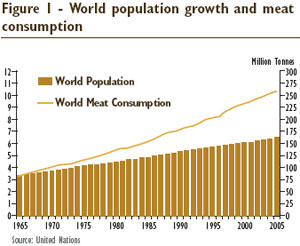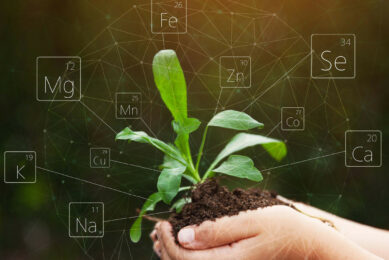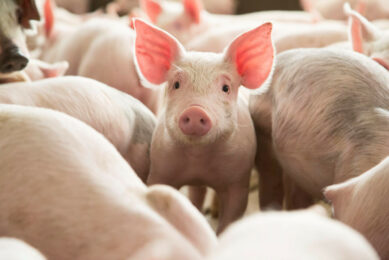Sustainability: Working within the rules of nature

How does agriculture become sustainable and assume environmental responsibility while remaining profitable feeding and producing enough animals for consumption by a growing global population?
“Something will turn up”, promised Charles Dickens’ Mr Micawber in the face of adversity. When faced with challenges that threaten its very existence, mankind’s ingenuity has throughout history come to the rescue of our species. Agribusiness faces its biggest challenge since the Green Revolution. As land available to agriculture declines as fast as middle classes in emerging countries are growing, waiting for something to turn up simply isn’t an option. By the United Nations’ reckoning, the earth will need to produce 50% more food with less land, water and energy while also reducing greenhouse gas emissions by 2030. If man’s ingenuity does not provide an answer to this multi-faceted problem, surely too great a burden for a single industry to shoulder, the cost to future generations will be great. Roughly speaking, for every 1% increase in disposable income, 2% more is spent on animal protein. Demand, it seems, is insatiable. No surprise, then, that it is a hallmark of industrial agriculture to maximise production and keep food as cheap as possible, pushing natural systems and organisms to their limit, asking them to function as efficiently as machines. When the inevitable problems crop up — when chickens or pigs remind us they are not machines — the system can be ingenious in finding ‘solutions’, such as antibiotics to keep pigs healthy. But this year’s solutions have a way of becoming next year’s problems. That is to say, they aren’t ‘sustainable. “We have an economy where we steal the future, sell it to the present and call it GDP (Gross Domestic Product),” according to a statement by P. Hawken in 2008.
What does sustainability mean, anyway?
In his essay ‘Politics and the English Language’, George Orwell wrote about the dangers of “a huge dump of worn-out metaphors which have lost all evocative power and are merely used because they save people the trouble of inventing phrases for themselves”. The very word ‘sustainability’ is used and misused with such abandon that at times, it appears that the whole concept is in danger of floating away on a sea of inoffensiveness. Who working in agriculture today, or any other field of endeavour, would stand up and be counted as against ‘sustainability’? Cynics will say that S word is losing all meaning, defined down just as ‘green’ and ‘organic’ before it, and adopting the mantle of marketing weasel word. After all, no less an authority than Lee Scott, outgoing CEO of Walmart (a company that has a generously furnished ‘sustainability’ chapter on its corporate website), has said that “sustainability is the single biggest business opportunity of the 21stcentury, and will be the next source of competitive advantage”. The 2009 ‘Great Debate’ held during Alltech’s recent International Animal Health and Nutrition Symposium in Lexington, Kentucky, USA, saw three global agricultural leaders present differing views on sustainability. “We will only have a sustainable system if farmers are protecting their assets,” said Dr. Lutz Goedde, deputy director Agriculture Development, Bill & Melinda Gates Foundation.
“Sustainability is more than just sustaining your own business. It is the next generation and the next generation. The United States’ response is disappointing. We need to broaden our horizons,” said Prof. Michael Boehlje, Department of Agricultural Economics and the Centre for Food and Agricultural Business (CAB), Purdue University. “Children do not believe that intensive agriculture and sustainability are compatible…We need to shape the definition or the textbooks will,” he continued. “The main limitation on agricultural sustainability in the future is people and the understanding of what sustainability is. Calorie demand doubled in the past 30 years and will continue to grow. Population will increase, the climate is changing and water is an issue for all,” according to Philip Wilkinson, OBE, managing director, 2 Sisters Group.
What are the challenges?
Undeniably, over the last decade sustainability has become a tenet of corporate responsibility.
It is now widely accepted that sustainable development must determine business goals to the same extent as value creation. Whatever the semantics, there are four principal reasons why sustainable agriculture and animal husbandry are essential to the future of food production: Globalisation, climate change, a growing population and, resultantly, increasing cereal and animal protein consumption. For years, critics have spoken of modern industrial agriculture as unsustainable within our lifetime. They have fingered a series of internal contradictions which, they insist, will conspire to engineer a ‘breakdown’ of the system. But if a system is unsustainable — if its workings offend the rules of nature — the cracks and signs of breakdown may show up in the most unexpected times and places. Pre-empting them is the single greatest challenge facing agribusiness today. Agribusiness faces a number of issues as it takes the path to sustainability: The limiting of environmental impact, the consolidation of brand values, the lowering of raw material costs and the development of credible crisis and reputation management (dioxin and melamine contamination.)
| Environmental impact An example: Reducing livestock mineral excretion Livestock producers can take a number of measures to minimise the environmental impact of their business. At a time of spiralling costs, they must exercise caution if feeding lower cost ingredients in order to avoid the increased excretion of nutrients and resulting impact on the environment. Over recent years, research has proven that the use of highly bioavailable trace minerals is essential for optimising livestock production (bioavailability is determined by a nutrient’s interaction with other minerals or dietary components). The more bioavailable a mineral becomes, the lower the dietary concentration needed to attain a given level of absorption and the less mineral excreted to the environment. Increased bioavailability has a twofold benefit of reducing feed costs and minimising nutrient build-up in the soil. Producers who recognise the need to limit excretion of nutrients fed in excess will also recognise the importance of nutrient balancing on the farm. When exploring these issues, the producer must focus on the nutrient inputs to the farm as a whole. Because the amount of nutrient excreted is directly related to its concentration in animal feed, the producer must exercise caution when selecting the concentration of particular nutrients in the diet. While animal diet must meet requirements for growth and production, it must also be designed to prevent additional excretion of these nutrients. Producers will incur unnecessary cost when wasting feed nutrients through excessive supplementation. The main advantage of feeding organic trace minerals is their higher bioavailability to the animal. For minerals such as zinc and copper, producers can achieve the same production goals by feeding small amounts of nutrients from organic sources as they can by feeding relatively large amounts from inorganic sources. By formulating their feed programmes accordingly, producers can minimise nutrient excretion and reduce the cost of rations while maximising animal growth for a more profitable operation. |
More than a nice word
Former European Commissioner for Health and Consumer Protection and the 2009 recipient of the Alltech Medal of Excellence, David Byrne describes sustainability as “development that meets the needs of the present without compromising the ability of future generations to meet their own needs”. What can be expected from a sustainable livestock production system? One can imagine an integrated, holistic approach. There are some examples – human labour and resources are substituted for capital and commercial inputs; external factors such as pollution ‘costs’ are considered and weighed against the economic benefits of a livestock facility; stocking densities do not compromise animal health and well-being; waste production does not exceed the nutrient-absorbing capacity of the surrounding land or jeopardise water quality; forage crops are grown on-site or nearby to promote self-sufficiency and less reliance on outside feed shipments; and rural communities are strengthened and empowered. Improved fertility and reproductive performance can ally with the selection of genetic traits within breeding stock that improve sustainable livestock farming.
In times of economic crisis such as these, it is useful to remember that livestock production can be both profitable and sustainable. Given the commitment and the will, producers have the resources and knowledge to enhance their credibility in eye of the consumer, and to begin their transition to sustainability today.
| Mineral complexes Alltech is a company that has long understood the importance of robust quality assurance and investment in research and technology coupled with the need to build a sustainable animal feed and food industry. The company has developed a range of fully traceable products, subject to stringent quality control procedures as part of the AQS (Alltech Quality System), which focus specifically on reducing mineral excretion into the environment Alltech’s BioplexSRTmrange of organic trace minerals provide trace mineral nutrition in a form as close to nature as possible. The inclusion of scarcely available trace minerals in this highly efficient form encourages better nutrient absorption, resulting in less waste released into the environment. Data retrieved from numerous trials indicates that optimum performance can be achieved if the principal minerals (zinc, copper, iron and manganese) are reduced to 30% of normal levels and added in Bioplex form. Sel-PlexSRTm, Alltech’s organic selenium is a natural, safe and scientifically proven form of organic selenium based on the strainSaccharomyces cerevisiaeCNCMI-3060. It promotes better absorption, retention and biological activity and allows the animal to build nutrient reserves for periods of increased demand without risking toxicity. Sel-Plex is the first organic selenium to receive authorisation as a nutritional additive for use across all species in the European Union. |











